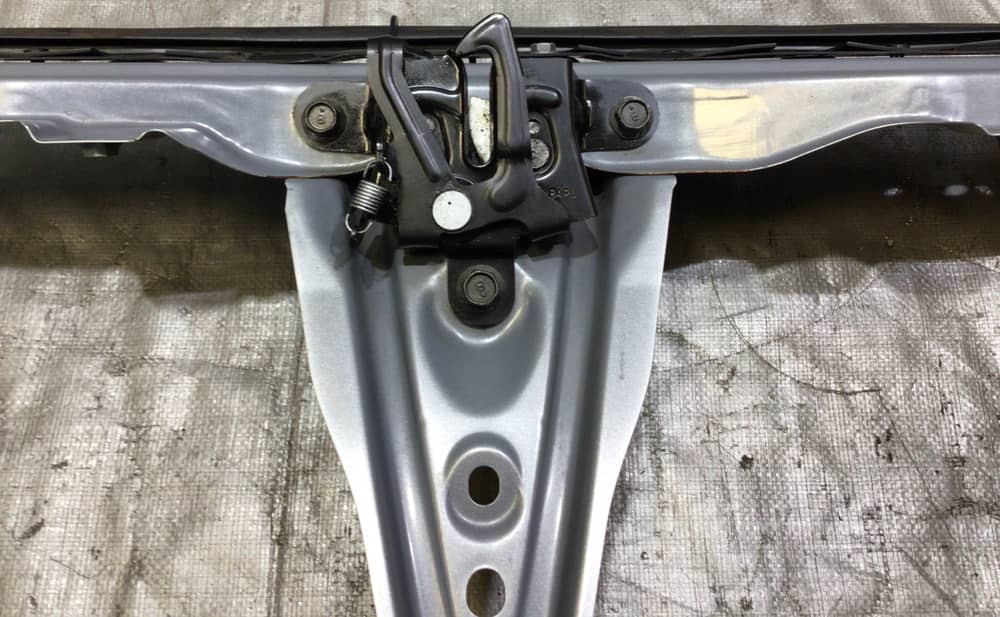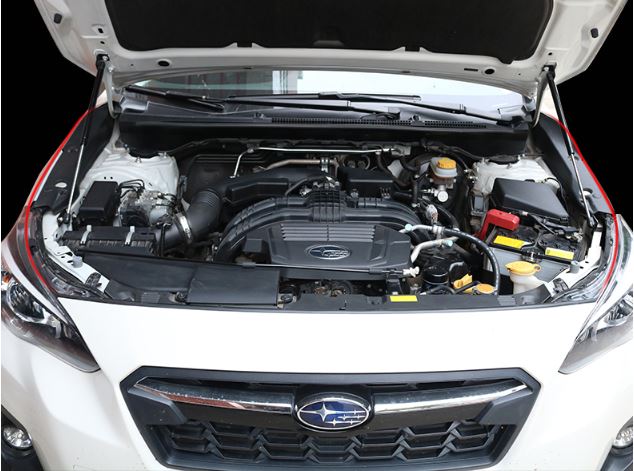The hood latch is a small but crucial component that ensures your Subaru’s hood remains securely closed. Hood latches might deteriorate over time and cease to work. How to fix Subaru hood latch?
Usually, replacing a malfunctioning hood latch is an easy do-it-yourself project that takes no more than thirty minutes. First, open the hood and find the latch mechanism at the middle on the bottom. Remove any plastic shields or covers carefully to reveal the latch. Check any worn-out, loose, or damaged pieces, such as the release cable, spring, or catch. Certain worn-out parts might need to be replaced.
Most auto parts stores have new latches, which are easily available and reasonably priced. Ensuring complete latch engagement when closed and matching all connectors are necessary for a proper installation.

Contents
How To Fix Subaru Hood Latch?
You can follow some basic steps to fix your Subaru hood latch:
- Open the hood and look for the latch mechanism on the bottom, near the middle. It will be near the front edge.
- Remove any plastic covers or shields to completely expose the latch. There could be a few screws or clips holding them together.
- Examine all elements of the latch for looseness, damage, or wear. The spring, catch, and release cable/arm are all essential components.
- If any components are worn, replace them. Hood latch kits containing all necessary components are affordable and widely available.
- When installing new parts, check sure everything is lined up correctly. Connect all cables and linkages properly.
- Close the hood and check the latch engagement. The catch should securely hold the hood in place.
- Reinstall any plastic covers or shielding that you removed.
- Open and close the hood several times to further test the latch performance. Ensure that it latches securely each time.
- Take the automobile for a short test drive and ensure that the hood stays firmly sealed at high speeds.
What Things Should You Do When Fixing A Subaru Hood Latch?

There are some components you should check when you fix this issue, you can consult them below:
Check For Hood Latch
Begin by inspecting the hood latch for evident damage, rust, or misalignment. Look for bent or broken components that could be interfering with the device’s functionality.
Inspect Bolts And Screws
Check all the bolts and screws that hold the hood latch in place. Tighten any loose bolts to ensure proper fit. This easy action can typically alleviate troubles caused by a loose latch.
Lubricate Moving Parts
Grease the latch’s moving parts with an appropriate lubricant, like silicone spray or white lithium grease. In addition to ensuring smooth functioning, this reduces friction. Closely examine the hinges and latch releasing mechanism.
Adjust Latch Alignment
To make sure the latch engages with the hood striker properly, realign it if necessary. Locate adjustment points using the car’s handbook, and then align the vehicle according to the manufacturer’s guidelines.
Test The Hood Release Cable
Check the hood release cable for kinks or damage. Lubricate or replace the cable as needed. Check that the cable is securely attached to the release handle inside the car.
Inspect Hood Striker
Examine the hood striker, which is the section of the body where the latch engages. Make sure it’s in good condition and there’s no debris or obstructions impeding a secure connection.
Consider Replacement Parts
If the latch is substantially damaged, consider replacing it or the related components. Check the vehicle’s manual for the right part numbers and specs.
Can I Drive With A Broken Hood Latch?
NO, because operating a car with a faulty hood latch poses major safety risks. The hood latch is a critical component that keeps the hood securely closed when driving. If the latch is damaged or malfunctioning, the hood may open unexpectedly while you’re driving. This reduces visibility and increases the risk of accidents.
Depending on the particular issue, driving a Subaru with a hood latch issue may or may not be safe:
Avoid driving the car if the hood latch is totally damaged and the hood will not stay closed at all. The hood could fly open while you’re driving, which makes it very risky. Get a tow to a repair shop for it.
If it is loose or only occasionally engaged, drive it only short distances at modest speeds until the hood latch is fixed. Unexpectedly, the lock can pop open. Go slowly at first.
Less dangerous are minor problems like a stuck or stiff latch, but drive cautiously until the problem is resolved. Steer clear of abrupt acceleration, braking, and turns that can shake loose the hood.
The danger of the primary latch failing entirely is also increased by the absence of a backup hood safety catch, such as a prop rod.
Increased speed increases the wind velocity beneath the open hood, raising the danger in the event that it pops.
How Much Does It Cost To Fix A Car Hood Latch?
Depending on the type and model of the car, fixing a hood latch can cost different amounts. The following are some common price ranges:
Labor costs: The majority of repair firms bill an hourly rate of $50 to $150. Replacing a hood latch typically requires 0.5–1 hours of work.
Replacement hood latch assembly: A new aftermarket hood latch assembly should cost between $50 and $150. Parts from the original equipment manufacturer, or OEM, could cost more.
Replacement of individual parts: Depending on the component, parts might cost anywhere from $5 to $50 per if just a few, such as the spring or cable, need to be changed.
Hood release cable: For a broken or worn-out hood release cable, a replacement should cost between $20 and $80.
Hood hinge adjustment/bushing replacement: Adjusting or replacing the bushings on a hood hinge might cost between $100 and $200 if the hinges are loose.
Secondary hood safety latch installation: Installation costs for a secondary hood safety latch range from $50 to $150 if gas shocks or a prop rod are used.
Repair cost: To diagnose a car, mechanics typically charge between $50 and $100.
When labor is added, the cost of replacing a basic hood latch, which only involves replacing the assembly or parts, should be budgeted between $150 and $350. In-depth hinge or additional safety device repairs can cost between $300 and $500.
Obtain quotes from several certified repair businesses at all times to be sure you’re obtaining a reasonable cost for the necessary service. Dealerships are frequently more expensive than reputable independent mechanics.